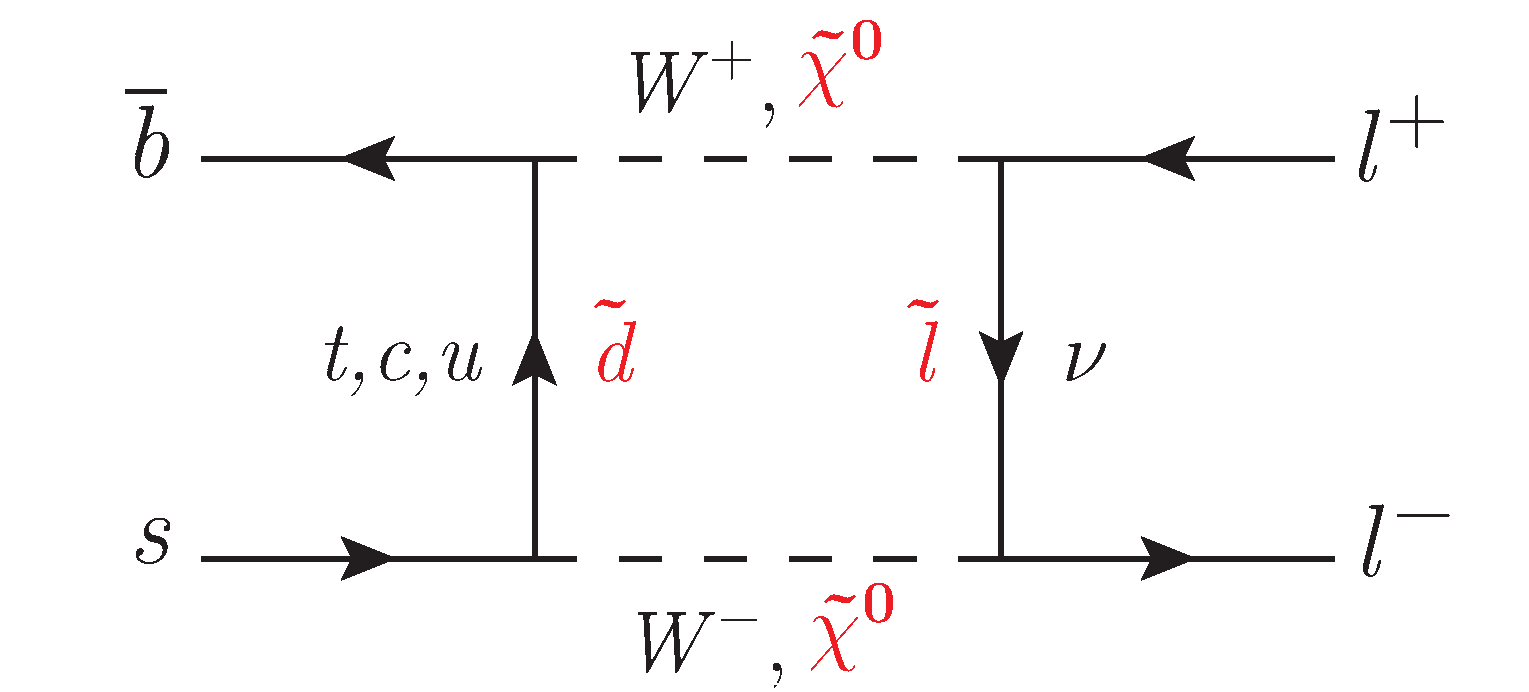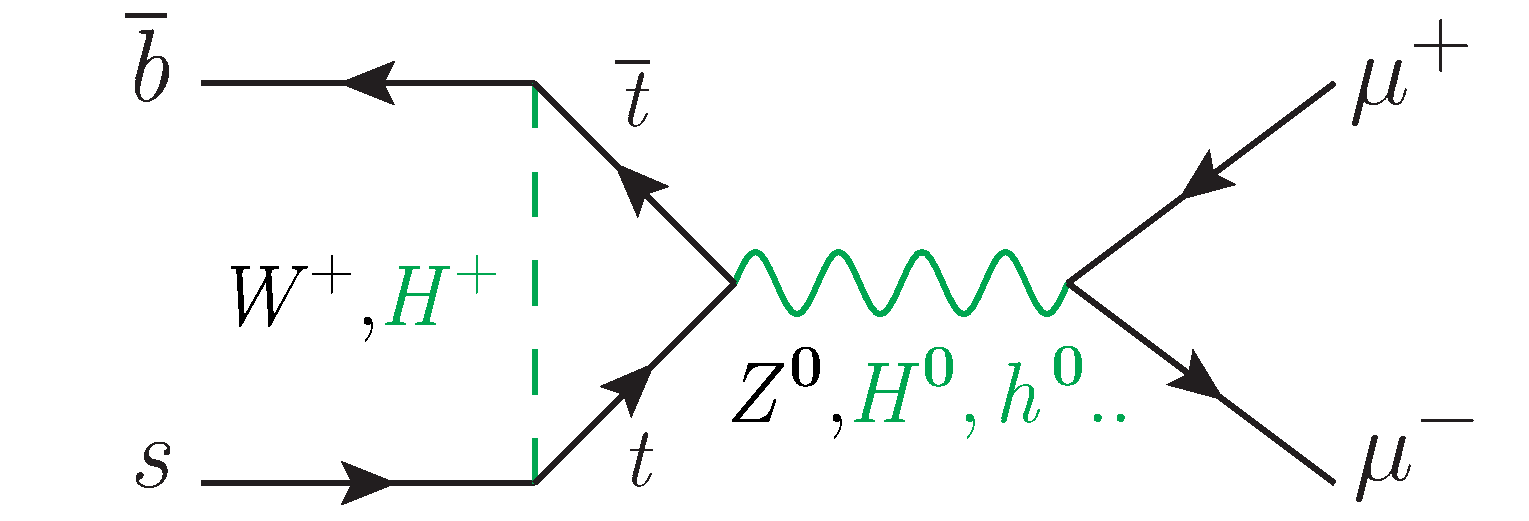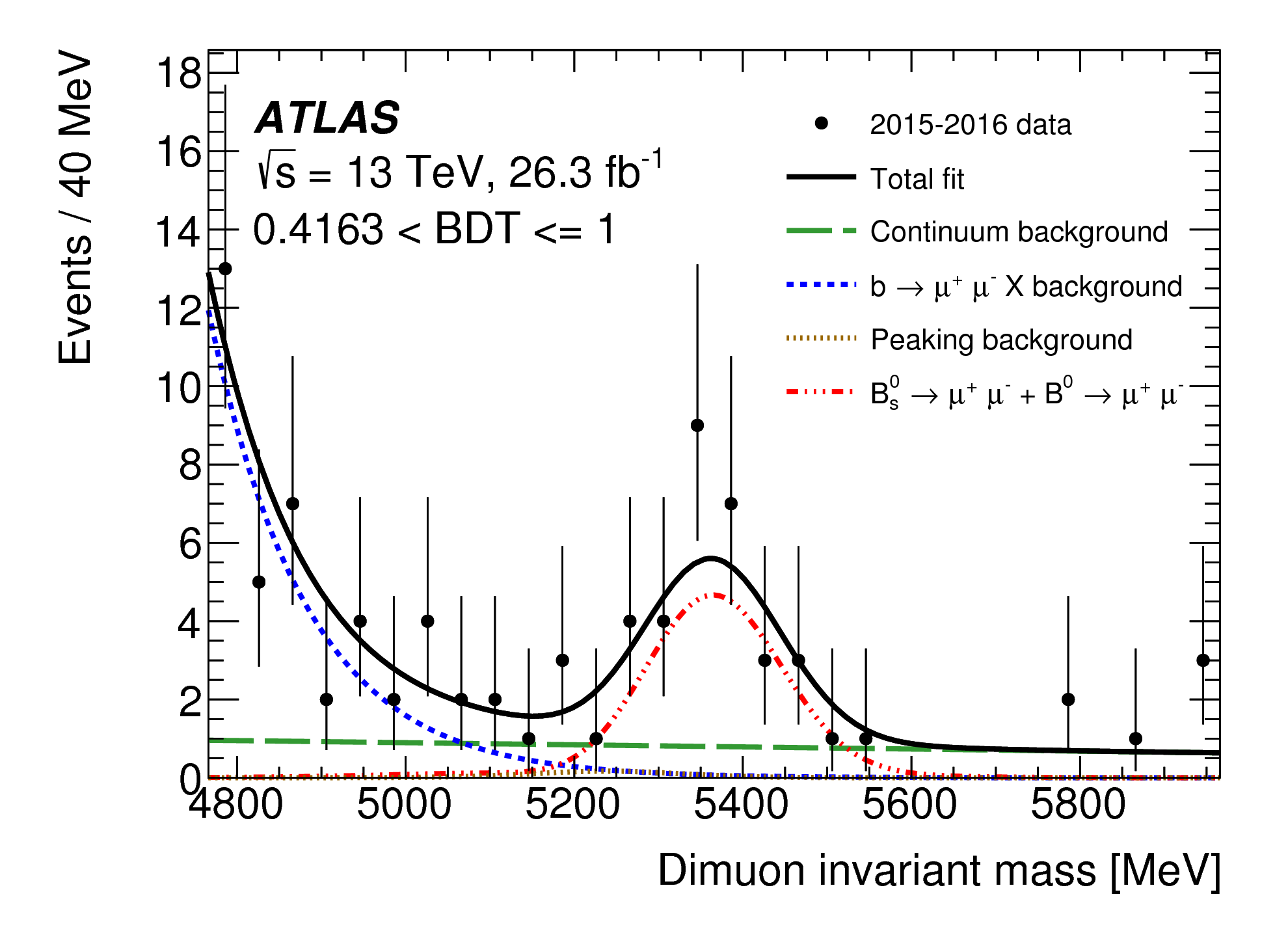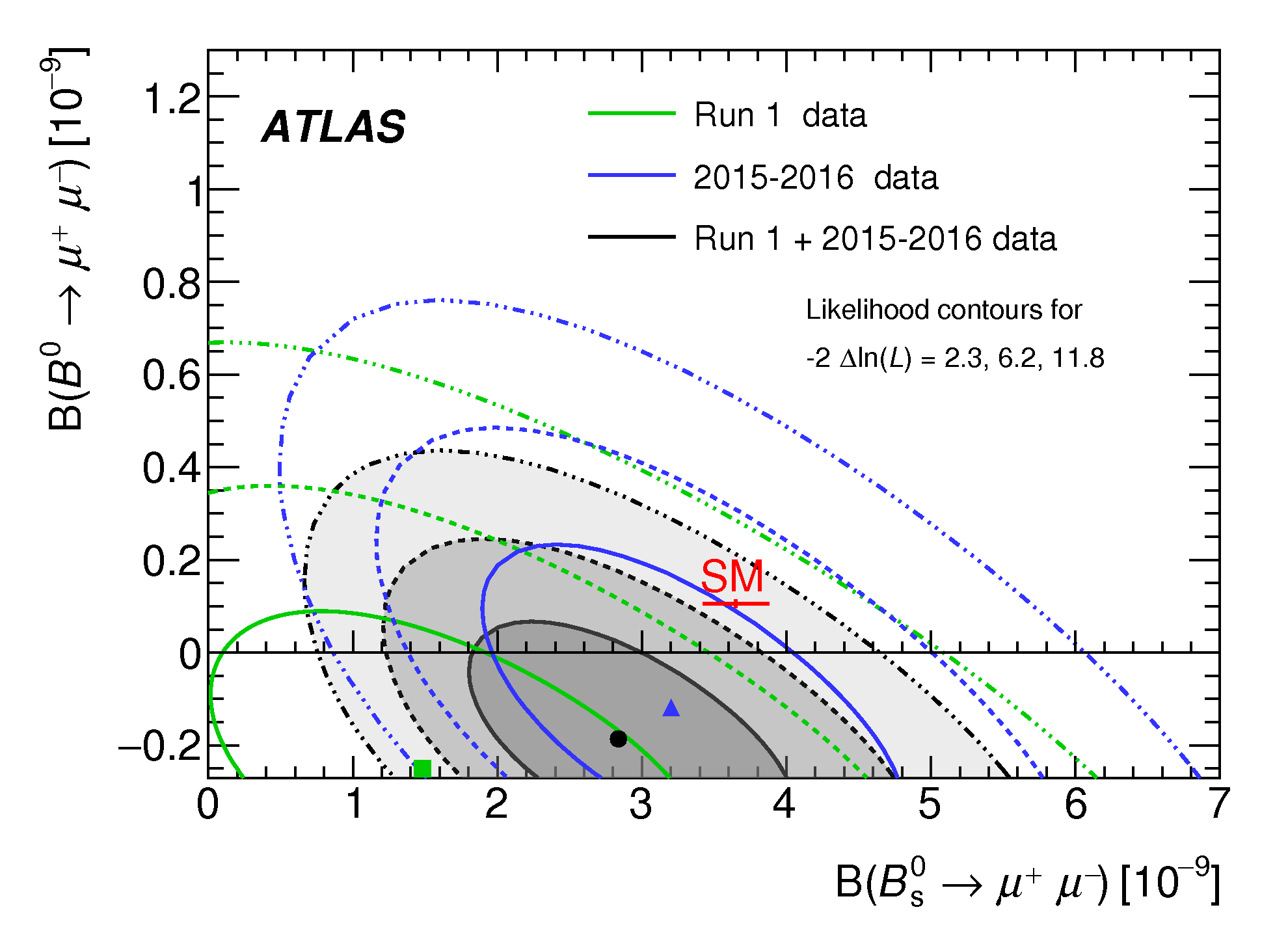ATLAS: Physics of heavy B mesons

 Two Feynman diagrams of the decay Bs0 → μ+ μ-. In addition to the diagram with Standard Model particles (in black) possible diagrams with particles from models beyond the Standard Model (in red and green) are displayed.
Two Feynman diagrams of the decay Bs0 → μ+ μ-. In addition to the diagram with Standard Model particles (in black) possible diagrams with particles from models beyond the Standard Model (in red and green) are displayed.Measurements of heavy B mesons open another window to New Physics beyond the Standard Model. Searches for rare and very rare decays or for processes prohibited in the Standard Model, as well as precision measurement of the Cabibbo-Kobayashi-Maskawa (CKM) mixing matrix are especially sensitive to New Physics. Observed deviations from values expected according to the Standard Model will indirectly hint to the existence of New Physics.

The ATLAS group in Siegen works on a measurement of the rare decay Bs0 → μ+ μ-, which is strongly suppressed in the Standard Model due to it's flavor changing neutral current (FCNC) and the helicity states of the final state muons. The branching fraction as predicted by the Standard Model is BF(Bs0 → μ+ μ-) = (3.65 ± 0.23) x 10-9 [Phys. Rev. Lett., 112, 101801 (2014)]. In a combined measurement the LHCb and CMS collaborations reported an observation of this decay with BF(Bs0 → μ+ μ-) = (2.8 +0.7-0.6) x 10-9 [Nature, 522 (2015)]. The measurement with the ATLAS data collected in 2011 and 2012, corresponding to an integrated luminosity of 25 fb-1, obtains BF(Bs0 → μ+ μ-) = (0.9 +1.1-0.8) x 10-9 [3]. This measurement exploits the well known branching fraction of the decay B± → J/ψ K± with J/ψ → μ- μ- by using this decay as a reference channel. In 2017 LHCb published an updated measurement of BF(Bs0 → μ+ μ-) = (3.0 ± 0.6 (stat.) +0.3-0.2 (syst.)) x 10-9 [Phys. Rev. Lett. 118 (2017) 191801] extending their LHC Run 1 dataset by data collected in 2015 and 2016. The most recent ATLAS measurement, using data collected in 2015 and 2016 in combination with the ATLAS Run 1 data, yields BF(Bs0 → μ+ μ-) = (2.8 +0.8-0.7) x 10-9 [4].
 >Likelihood contours in the plane BF(Bs0 → μ+ μ-) - BF(B0 → μ+ μ-) for the combination of the Run 1 and 2015-2016 Run 2 results (shaded areas). The contours are obtained with the combination of the two analyses likelihood, for values of -2 Δln(L) equal to 2.3, 6.2 and 11.8. The contours for the individual Run 2 2015-2016 and Run 1 results are overlaid. The SM predictions and their uncertainties are included. [4]
>Likelihood contours in the plane BF(Bs0 → μ+ μ-) - BF(B0 → μ+ μ-) for the combination of the Run 1 and 2015-2016 Run 2 results (shaded areas). The contours are obtained with the combination of the two analyses likelihood, for values of -2 Δln(L) equal to 2.3, 6.2 and 11.8. The contours for the individual Run 2 2015-2016 and Run 1 results are overlaid. The SM predictions and their uncertainties are included. [4]We also search for the extremly very rare decay B0 → μ+ μ- which is even more strongly CKM-suppressed. The expected branching fraction predicted by the Standard Model is BF(B0 → μ+ μ-) = (1.06 ± 0.09) x 10-10 [Phys. Rev. Lett., 112, 101801 (2014)]. Several scenarios of physics Beyond the Standard Model (BSM) predict significantly larger branching fractions which makes this decay especially interesting for the search for New Physics. Furthermore, some BSM scenarios allow for an even stronger suppression of this decay than predicted by the Standard Model. The measurement with the ATLAS data collected in 2011 and 2012 results in an upper limit of the branching fraction BF(B0 → μ+μ-) < 4.2 x 10-10 at 95% confidence level [3] while the CMS and LHCb collaborations report evidence for the decay with a combined measurement of BF(B0 → μ+μ-) = (3.9 +1.6-1.4) x 10-10 [Nature, 522 (2015)]. In 2017 the LHCb collaboration, adding LHCb data collected in 2015 and 2016, set an upper limit of BF(B0 → μ+μ-) < 3.4 x 10-10 at 95% confidence level [Phys. Rev. Lett. 118 (2017) 191801]. The most recent measurement with ATLAS data collected in 2015 and 2016 combined with the ATLAS Run 1 data yields an upper limit of BF(B0 → μ+μ-) < 2.1 x 10-10 at 95% confidence level [4]. The ATLAS result in the BF(Bs0 → μ+ μ-) - BF(B0 → μ+μ-) plane is compatible with the Standard Model predictions at the 2.4 σ level (see figure).
Publications (with contributions from Siegen):
- ATLAS Collaboration, Search for the decay Bs0 → μ+ μ-, Phys. Lett. B713 (2012) 180-196
- ATLAS Collaboration, Limit on Bs0 → μ+ μ- branching fraction based on 4.9 fb-1 of integrated luminosity, ATLAS-CONF-2013-076 (2013)
- ATLAS Collaboration, Study of the rare decays B0s and B0 into muon pairs from data collected during the LHC Run 1 with the ATLAS detector, Eur. Phys. J. C. 76 (2016) 513
- ATLAS Collaboration, Study of the rare decaysof B0s and B0 into muon pairs using data collected during 2015 and 2016 with the ATLAS detector, JHEP04 (2019) 098





